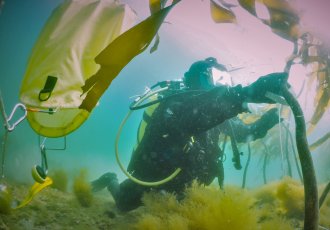
Nature restoration
If we are to achieve a healthy and sustainable planet, we must repair as well as preserve.
When we humans build roads and houses, grow food or extract minerals, it often has a negative effect on nature. The UN nature panel estimates that 75 percent of the world's land area and 20 percent of all species are under very strong pressure. This means that we must not only preserve the nature we have left, but we must also repair what has been destroyed - and prevent further destruction.
If we manage to restore the ecosystems, they will help to mitigate the effects of floods, purify water, store carbon and resist climate change.
UN has declared 2021-2030 the decade for ecosystem restoration. There are several ways to restore nature. We can restore habitats or create new habitats for species that have lost their habitat. In connection with a development, mitigating measures are about doing as much as possible to avoid an area being destroyed. Alternatively, a developer can compensate for a destruction by restoring a similar area elsewhere.
This is how NIVA can contribute
Our expertise includes:
- Restoration of freshwater and marine ecosystems
- Aquatic biodiversity
- Effects of combined impact types on freshwater and marine ecosystems
- Monitoring and development of indicators (Water Framework Directive)
- Connection between river and riparian zone (the transition between water course and land)
- Experimental work with mesocosms (large test systems)
Why is NIVA working on this?
Rehabilitation and restoration of ecosystems and ecosystem services will, together with so-called nature-based solutions, become increasingly important to reduce the effects of climate change, contribute to carbon storage, strengthen biological diversity and as measures against pollution.
NIVA will use and strengthen our expertise to develop new and more nature-based solutions to restore nature. We have solid knowledge of aquatic biodiversity, ecosystems, and ecosystem services, and these are crucial research areas for a sustainable future.
Contact us if you want to know more about how we can contribute.



.jpeg)